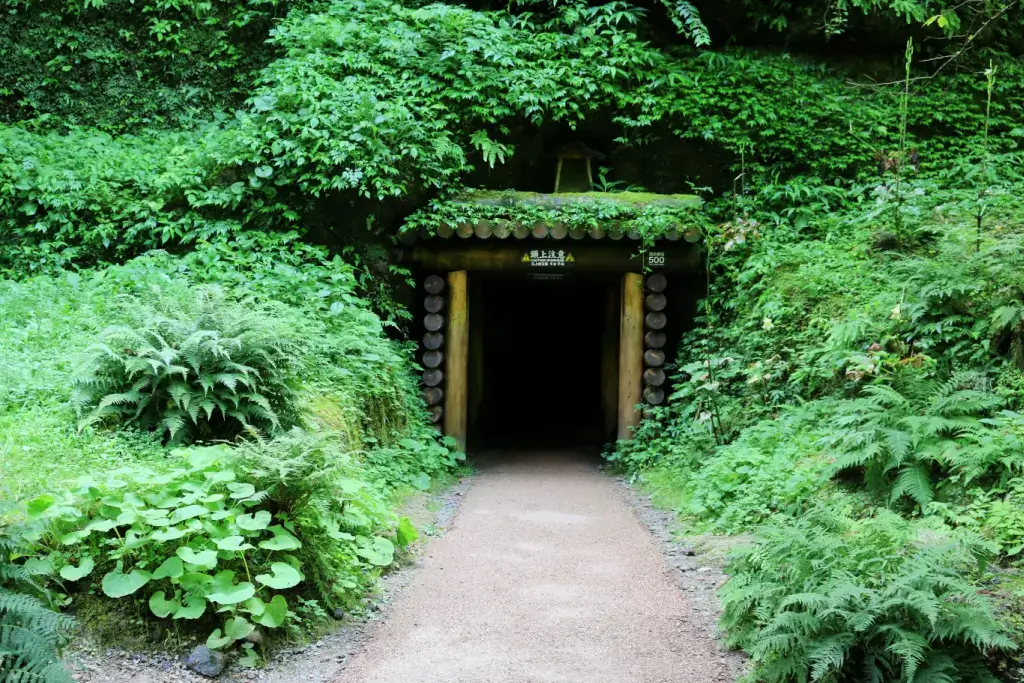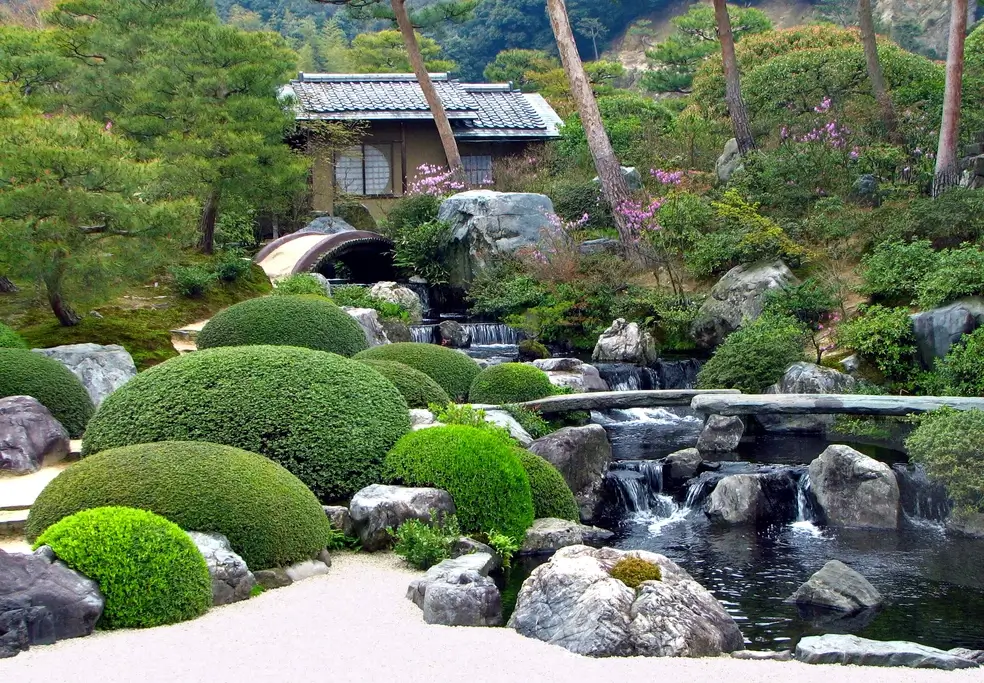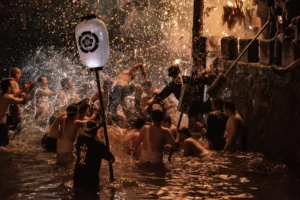Shimane Prefecture, located in the Chugoku region on Japan’s Honshu Island, is famous for its natural beauty, rich cultural heritage, and unique artistic landmarks. People can enjoy breathtaking landscapes of mountains and rivers as well as immerse themselves in cultural activities filled with art and tradition. Join us to discover five must-visit destinations here together!
Table of Contents
ToggleIwami Ginzan Silver Mine
The Iwami Ginzan Silver Mine, hiding in the mountains of Oda City, has so much history and adventure. This legendary mine, discovered in 1526 by a clever Japanese merchant named Kamiya Jutei, became the largest silver mine in Japan’s history. For nearly 400 years, from bustling beginnings to quiet closure in 1923, it produced one-third of all the silver in the world at its best.
What’s truly remarkable about Iwami Ginzan is its harmonization with its natural surroundings. Despite its massive scale, the mine coexisted peacefully with the environment thanks to careful logging practices and sustainable control measures. This awesome site earned the prestigious UNESCO World Heritage Site title in 2007.

Today, visitors can step back in time as they explore the remnants of this historic mine. You can explore the Ryugenji Mabu Mine Shaft, a tunnel where people used to dig with pickaxes. And don’t forget to check out the old mining tricks like the Haifukiho Method, which boosted Japan’s silver production to exceptionally high levels. But wait, there is even more to have fun around this place! You can wander through Omori’s samurai town and Rakanji Temple’s statue-filled caves before unwinding in Yunotsu’s hot springs.
Nima Sand Museum
In sunny Nima Town, six big glass pyramids hold the Nima Sand Museum! It all began in 1991 when the local mayor wanted to show off Kotohgahama Beach’s gorgeous sand. This sand even makes a satisfying squeaky sound when you walk on it! Inside the museum, you’ll see cool things made with this “singing sand,” like art pieces and the world’s biggest hourglass.

The six glass pyramids, designed by a local architect named Nima Shin Takamatsu, are full of sand worldwide. This really makes them look amazing! The largest pyramid holds the massive hourglass. It’s so huge that it takes a whole year for the sand to move from the top to the bottom! The locals turn it upside down each New Year’s Eve to welcome the new year.
Overall, the Nima Sand Museum has many fun activities to try out. There’s a special workshop where you can make your own sand creations. Plus, right near the MOBA souvenir shop, you can check out a collection of beautiful glasswork.
Are you looking for amazing snacks while traveling through places like Shimane Prefecture? Check out Sakuraco! Sakuraco delivers traditional Japanese snacks, teas, sweets, and snacks from local Japanese makers directly to your door so you can enjoy a taste of Japan anywhere!
Tamatsukuri Onsen
Tamatsukuri Onsen, in Tamayu Town, is renowned as one of Japan’s oldest hot spring destinations. Locally known as the “hot water of god” in the area, Tamatsukuri Onsen’s mineral-rich waters are cherished for their skin-nourishing benefits. This reputation also earns the nickname “hot spring for beautiful skin.”

From 733 AD, Tamatsukuri Onsen has had a long history filled with myth and tradition. According to legend, the gods themselves once bathed in these sacred waters. Today, visitors have 22 traditional Japanese inns to pick from along the Tamayu River or big luxury hotels capable of fitting up to 700 people.
Tamatsukuri Onsen is a sanctuary for relaxation and a special place filled with cultural heritage. “Tamatsukuri” comes from bead-making, a tradition here for many years. People can even drop by jewelry stores to see and buy magatama beads, which have a lot of meaning in Japan. Some stores even let visitors make their own unique beads.
Adachi Museum of Art
The Adachi Museum of Art was established by Adachi Zenko, who loved Japanese art and gardens. Opened in 1970, it combines beautiful gardens and fantastic artwork to give people a unique experience. These famous gardens here have been rated the best in Japan since 2003. You can visit any time of the year and see how the gardens change with the seasons.
This art museum has many gardens, each with its own look. There’s a Dry Landscape Garden, a Tea Garden, a Moss Garden, and many others. Adachi Zenko thought Japanese gardens were like paintings that change constantly. Thus, he dedicated much effort to collecting trees and rocks from different places in Japan to make the gardens perfect.

Aside from the gardens, the museum also has nearly 1300 paintings and artworks from the twentieth century, which change with the seasons. You can always find something new and exciting here. There’s a special section with paintings by a famous artist named Yokoyama Taikan. And if you’re into ceramics, there’s an exhibit just for that!
Furthermore, people can also relax and enjoy the views from two cafes and a modern teahouse. They serve delicious treats and drinks, perfect for a break after exploring the museum. Before you leave, stop by the shops and pick up a souvenir, such as a print of your favorite artwork or a photo of the beautiful gardens!
Izumo Taisha
Izumo Taisha, also known as Izumo Oyashiro, is a famous shrine in Izumo, Shimane Prefecture. This shrine hosts the deity of marriage, Okuninushi-no-Ookami, who is said to foster mutual growth and happiness among people and living things.
One remarkable feature of the shrine is its large shimenawa (sacred straw rope), used to ward off evil. Also, Izumo Taisha’s distinctive method of paying respects, with two bows and four claps, sets it apart from other shrines.

Also, check out its big area and the four torii shrine gates when visiting Izumo Taisha! Walking along the shrine’s path with majestic pine trees is like walking where the gods walk. Moreover, Soganoyashiro is also worth exploring since it’s a spot within the shrine famous for its divine energy.
Every November, Izumo Taisha holds a unique festival called the Kamiari Festival. This festival is notable because it’s believed to be when the gods decide essential matters such as marriages, deaths, and births for the upcoming year.
Why should I visit these places in Shimane Prefecture?
Exploring these spots in Shimane Prefecture promises an exciting journey with a beautiful blend of history, nature, and culture. Whether drawn to ancient heritages, stunning landscapes, or world-class art, Shimane always offers exceptional experiences worth discovering. Don’t miss stopping by these remarkable destinations in Shimane! Which one did you like the most among these destinations? Share your thoughts in the comments below!










